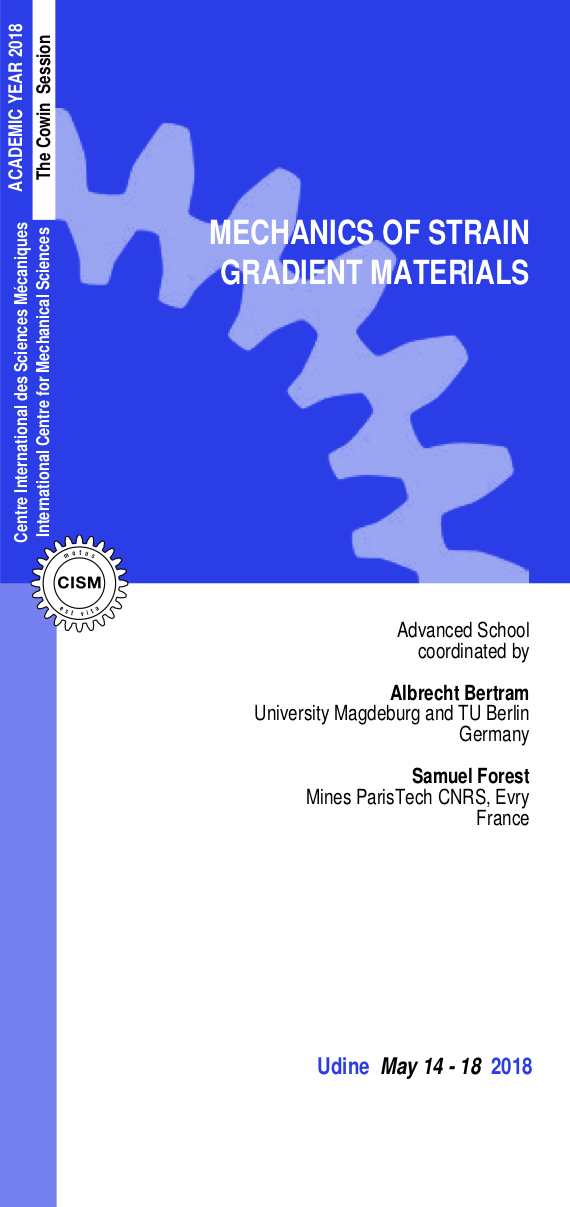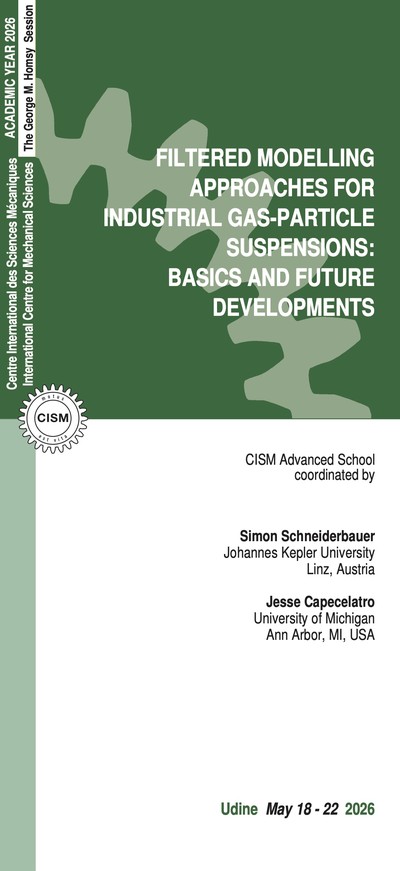Bertram, A., Compendium on Gradient Materials, Otto-von-Guericke-Universität Magdeburg, 240 pages (2017).
Cordero, N.M., Forest, S. and Busso, E.P., Second Strain Gradient Elasticity of Nano-Objects, J. Mech. Phys. Solids, 97, 92-124, doi: 10.1016/j. jmps.2015.07.012 (2016).
Liebold, C., Müller, W. H., Comparison of gradient elasticity models for the bending of micromaterials. Computational Materials Science, 116, 52-61 (2016).
Gudmundson, P., A unified treatment of strain gradient plasticity. J. Mech. Phys. Solids, 52,6, 1379-1406 (2004).
Seppecher, P., Alibert, J.-J., Dell'Isola, F., Linear elastic trusses leading to continua with exotic mechanical interactions. J. Physics: Conference Series, 319,1, 13 (2011).
Olive, M., Auffray, N., Symmetry classes for odd-order tensors. ZAMM - Journal of Applied Mathematics and Mechanics, 94(5) 421–447 (2014).
Panteghini, A., Bardella, L., On the Finite Element implementation of higher-order gradient plasticity, with focus on theories based on plastic distortion incompatibility, Computer Methods Appl. Mech. Engrg. 310, 840-865 (2016).
Linear gradient elasticity. Hooke’s law is extended to the first strain gradient elasticity. After discussing the underlying principles, we examine the peculiarities that arise in this case. The appearance of odd-order elasticity tensors is a new feature absent in classical media.
6 lectures on: The experimental evidence of strain gradient elasticity from the micro perspective to macroscopic world including parameter analysis, theoretical basis for an experimental understanding of elastic strain gradient effects, experimental methods used to measure strain gradient elastic constants: Raman spectroscopy, atomic force microscopy, pantograph analysis.
* Italian VAT is 22%.





